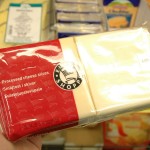Taste test: Pandora’s lunchbox versus mine
Here’s what I ate yesterday – a warm salad of quinoa and black beans made fragrant with a lime and cumin dressing and tossed through with small cubes of carrot, fine arcs of green pepper and a diced half-onion. A generous amount of finely chopped, quickly sauted garlic added aroma and flavour to the admittedly bland quinoa. A handful of parsley topped it all off nicely, I thought as I finished cooking.
The quinoa, of course, notionally and nutritionally took me at least 3,000 years back in time when the grain-like crop was successfully domesticated for human consumption in Ecuador, Bolivia, Colombia and Peru. In many ways, my salad represented the survival strategies of the human race.
There is a sound reason to write about my lunchbox (or plate, since I ate at home) from yesterday. It was the day ‘Pandora’s Lunchbox’ was published.
The book, whose full title is Pandora’s Lunchbox: How Processed Foods Took Over the American Meal is by a former food industry reporter Melanie Warner. According to The Huffington Post, Warner argues that Americans “place a premium on convenience over health when it comes to food. And the effects of that prioritization — whether intentional or not — can be pretty disastrous.”

Pandora opens the pithos or jar (now incorrectly said to be a box) given to her by Zeus, thus releasing all the bad things of the world into the world. Today, that might include processed cheese?
Apparently, Warner doesn’t believe that people can – or should – give up processed foods. The Huff Post says that while “she was writing the book, she ate and fed her children more processed food than she typically did.” And she’s quoted to say, “I don’t think it is realistic for people in this day and age to cook every night of the week”. She’s right. That’s impossible. Unsustainable. And not required.
What about a non-cook, non-processed meal? I haven’t bought – or read – Warner’s book so I’m not sure if she suggests this, but I brought up a small child on my own, in London, with a full-time job and almost no processed food (in case you’re wondering, takeaways were limited to twice a year, or thereabouts).
Here’s one recipe for the non-cook, non-processed food kitchen. I have dozens (in my taste memories):
Buy a packet of pitta bread
Make your own hummus – it’s very easy and it can be made in large quantities and freezes excellently; a tub sits nicely in the fridge for three weeks at the very least (if you can’t/don’t want to make it, buy a tub)
Slice a tomato or two
Boil an egg
Put a leaf or two of something green on the plate
(Hot sauce or any condiment you like, to taste)
Voila. Bon appetite.



